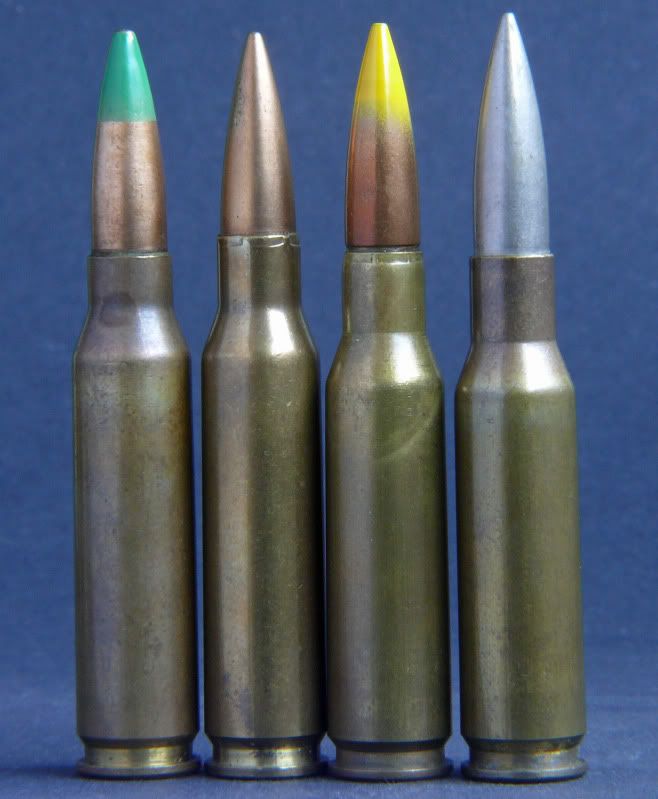TonyE
HONOURED MEMBER RIP
7mm Comp
You may well be right Jim, as without having it in front of me it is difficult to tell from a photo. It depends where the difference is; if it is in the neck then it will affect free travel of the bullet, but if it is in the base to shoulder length then it will not chamber correctly as it headspaces on the shoulder.
Regards
TonyE
Tony,
I know it shares their 49mm(ish) caselength but I can't see how this green-tipped round (7mm FA-T1E3!) could possibly be a copy of the 7mm High-Velocity or the 7mm Second-Optimum as it's shoulder position is very different to both.
However, it is dimensionally identical to the 7mm Compromise in all aspects other than the slight reduction in caselength. This shortening wouldn't have any effect on it's ability to chamber in a weapon intended for the 7mm Compromise. I think it's got to be a US version of the Compromise.
Jim
You may well be right Jim, as without having it in front of me it is difficult to tell from a photo. It depends where the difference is; if it is in the neck then it will affect free travel of the bullet, but if it is in the base to shoulder length then it will not chamber correctly as it headspaces on the shoulder.
Regards
TonyE

